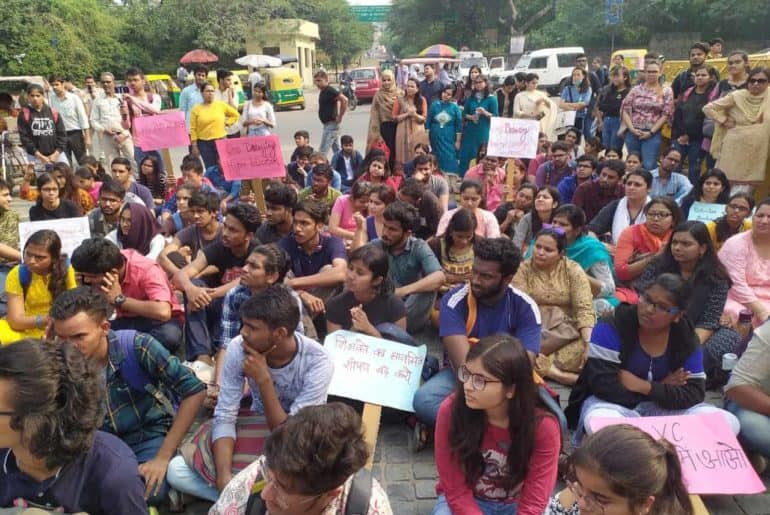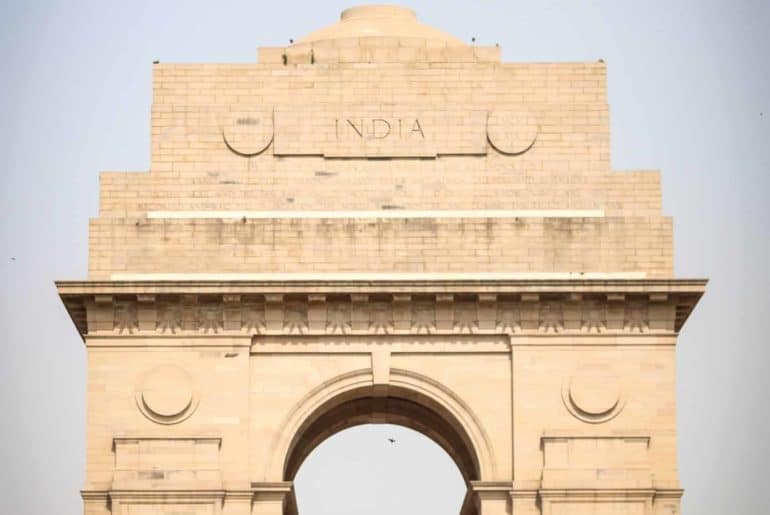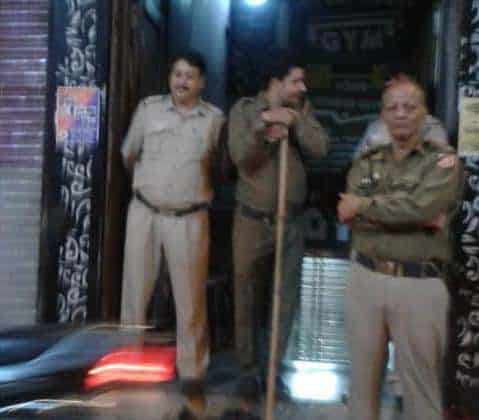The Delhi University Teacher’s Association (DUTA) held an emergent meeting at Tuesday, 24th October 2019 to discuss the varsity’s twin move to create an “Institute of Eminence” within it and replace its various statutory bodies like Executive Council by an all-powerful Board of Governors.
DUTA had a meeting wherein recent issues of key importance were discussed. The meeting’s main motive was to formalise the arguments against the decision and submit the same to the University Administration expressing their concerns while also highlighting the possible consequences.
The concept of the institute of eminence is taken as a pathway for better education, however, a thorough understanding of the label is required. Here is an explanation of the same.
The status of institute of eminence will take place with the formation of 9 autonomous centres and the replacement with a separate board of directors. The exercise in creating a separate list of Institutions is geared towards promoting a special economic zone for Higher Education brands that may pursue commercial aims with impunity and without any public accountability, said DUTA. The organisation was responding to the Human Resource Development (HRD) Ministry decision to grant ‘Institutes of Eminence’ status to 6 institutions.
Along with the University of Delhi, the government granted ‘Institutions of Eminence’ (IoEs) status to IIT-Delhi, IIT-Bombay and the Bengaluru-based Indian Institute of Science (IISc) in the public sector, and Manipal Academy of Higher Education, BITS Pilani and Jio Institute by Reliance Foundation in the private sector.
Talking about IOE, to give the institute of eminence within the University of Delhi (DU) will lead to disintegration. DUTA’s discussion was pointed towards how currently, the entire University has been awarded the status of IoE, and it is shared by all the institutions, faculty members and stakeholders jointly. But once an independent parallel structure within it is declared as IoE, it will receive the entire limelight and government patronage leading to disintegration of unity among the institutions.
The DUTA is also opposing the University Administration’s decision to do away with the current administrative or statutory bodies of the university such as the Executive Council and Academic Council with an all-powerful Board of Governors. University has decided to advance the timeline of setting up a Board of Governors in line with the New Education Policy 2019, because of the following reasons:
The new Board of Governors will not be accountable to anyone within the university. Instead, the Board of Governors will only be accountable to the Rashtriya Shiksha Aayog, which is a cause for concern. In addition to this, the members of the Board of Governors will be nominated and not elected, from outside the university, which again calls for caution.
Talking about the advancement of plans to implement the Draft New Education Policy from 2020 to October 2019 itself, DUTA said, “This timeline seeks to do away with the statutory bodies like Executive Council, Academic Council, departmental councils and college staff council by the constitution of all-powerful BOGs (Board of Governors).”
DU is going to implement this BOG-ruled autonomous structure within the varsity in the garb of eminence, where this institute would receive a grant of INR 1000 crore in 10 years from the Centre directly and their matters will never undergo the critical scrutiny from the EC, AC or Finance Committee which raises a bigger motive for privatization.
“The ’eminence’ tag is being used to dismantle the university when the government money should have benefited the entire university and improved its infrastructure” DUTA said allegedly.
The question is hand is why the university administration is taking such dire steps, going against their unions to implement this.
In a conversation with Abha Dev Habib, Office bearer, DUTA, she told DU Beat, as an answer to the above question, “It’s all just a big facade for privatization, commercialisation and corporatization of education. Whether they call it graded university, new education policy or institute of eminence, it’s just privatization, where there will be fee hikes, all in the name of profit.” She also said, “There will be a serious loss of accountability and greater disintegration.”
DUTA also criticized the way some private institutions have been selected as Institutes of Eminence.
The Government had received more than 100 applications for the grant of IoE status. Under Public Sector, the following have applied for the scheme-
- 10 central universities
- 25 state universities
- 6 deemed to be universities
- 20 institutions of national importance
- 6 standalone institutions
As for the private sector, 9 private universities and 16 deemed to be universities have applied in the Brownfield category and 8 institutions have applied in the Greenfield category.
Existing standalone institutions which are not universities or deemed-to-be-varsities were allowed to apply under Greenfield category for Institution of Eminence status to avail greater autonomy and get a world-class reputation.
DUTA has been quite vocal in presenting their resentment against the proposal. Many staff associations along with students throughout the varsity have protested against this proposal and the new education policy.
Where colleges like Ramjas college went on a ten-day dharna, other colleges like Gargi college and Kamla Nehru college formed a human chain to show their resistance.
Staff association and students of Gargi college and Kamala Nehru College come together and form a long queue of protest against the privatization of University of Delhi with slogans like “Education is not for sale”. Video by Avni Dhawan for DU Beat
After the emergent meeting that took place on Tuesday where all the arguments were formalised, DUTA has rejected the proposal. It was rejected on the grounds that it involves a push towards privatisation of education as confessed by Mr. Prakash Javadekar while announcing it for the first time as Graded Autonomy for universities and grant of IoE status. He had confessed that these steps constitute the initiation of liberalisation in the education sector.
“It also gives the University the freedom to determine fees for domestic students subject to one meaningless rider. The rider is a principle that no one will be turned away for his/her incapacity to pay. In the absence of any guideline on how high the fees are and the means criteria to be entitled to fee waiver/scholarship. Loans binding their future would become the only effective mechanism.” said DUTA in their press release.
The DUTA Executive also took a decision to call for a Total Shutdown of the University on Friday, 25th October 2019 and a Dharna from 1 p.m. to 3 p.m. outside the Executive Council meeting to protest against this move and also to demand the withdrawal of the 28th August 2019 letter asking for guest appointments to be made against all new vacancies.
Feature Image Credits: Abha Dev Habib
Chhavi Bahmba
[email protected]












